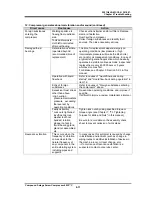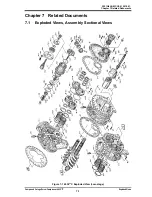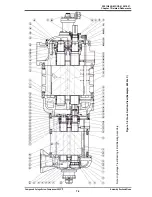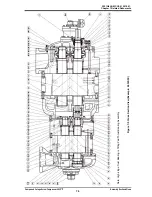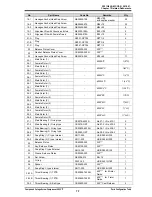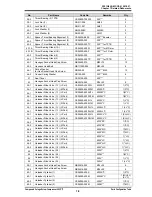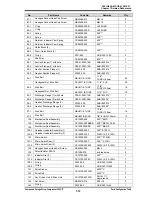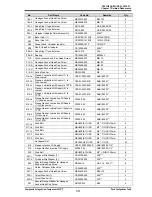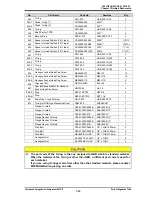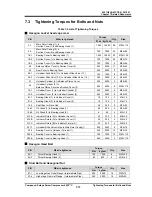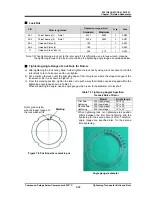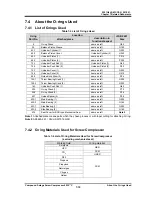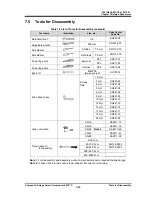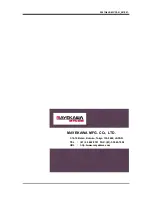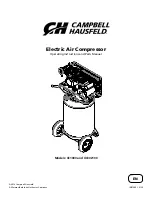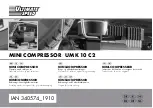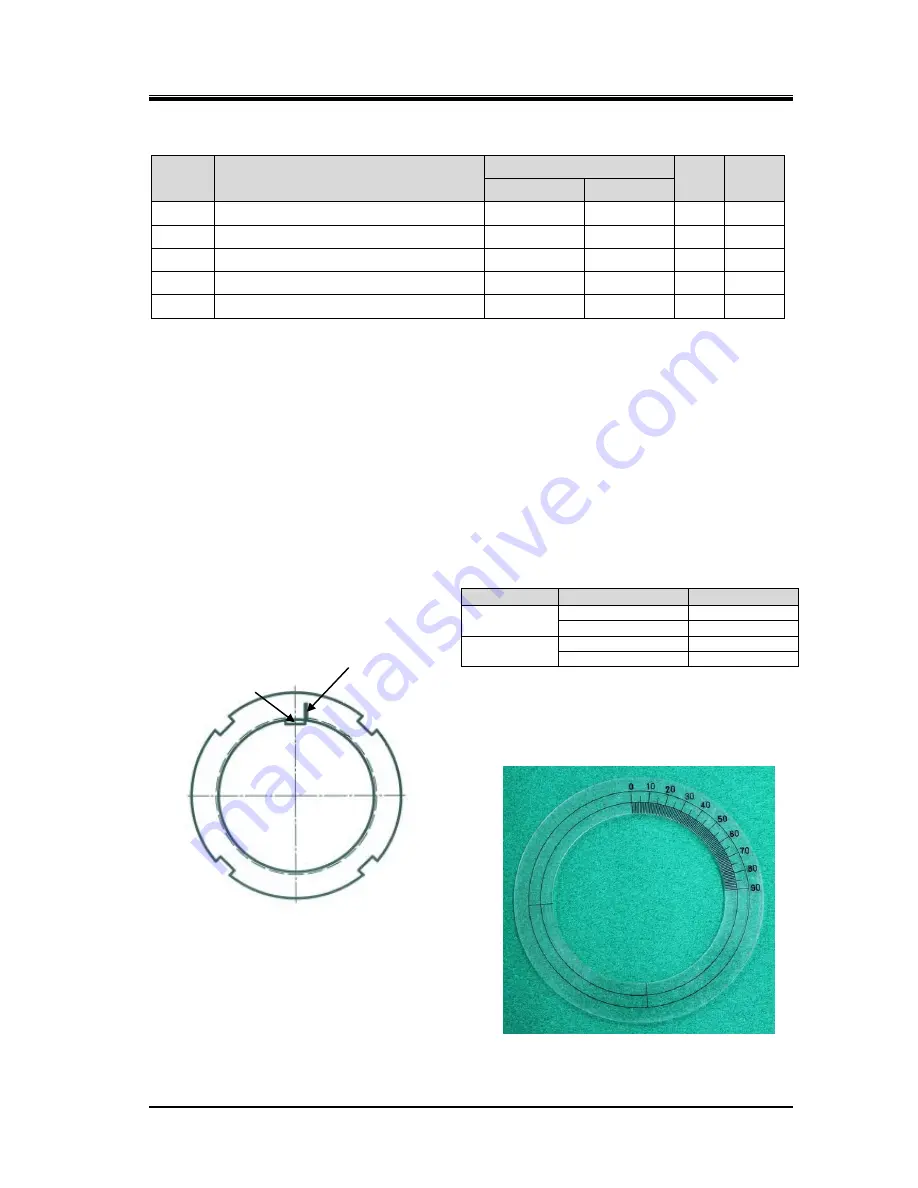
2201Q4JE-MY-C9-N_2018.01.
Chapter 7 Related Documents
Compound 2-stage Screw Compressor 4032**C
Tightening Torques for Bolts and Nuts
7-14
Lock Nut
P/N
What is tightened
Tightening torque (N·m)
Q
’ty.
Size
Standard
Maximum
39-1
Thrust Bearing (1) Note 1
5347
6683
2
AN28
39-2
Thrust Bearing (2) Note 1
2259
2824
2
AN21
69-1
Unloader Piston (1)
180
-
2
AN10
69-2
Unloader Piston (2)
180
-
1
AN10
71
Unloader Slide Valve (2)
408
510
1
AN12
Note 1: When tightening a lock nut to the rotor axis, if it is difficult to use a torque wrench, manage
the tightening torque of the lock nut controlling the tightening angle range as explained below.
Tightening Angle Range of Lock Nuts for Rotors
a) After tightening the lock nut by hand, further tighten the lock nut by using a lock nut wrench until the
rotor starts to turn. Take care not to over-tighten.
b) Put a mark on the lock nut at the right side edge of the rotor groove where the stopper tongue of the
lock washer fits in, as shown in Figure 7-9.
c) From this marking position, tighten the lock nut in such a way that rotation can be stopped within the
tightening angle range shown in Table 7-3.
When measuring the angle, use an angle gauge which is set to the diameter of rotor shaft.
Table 7-3 Tightening Angles Specified
for Lock Nuts of Rotor
* When tightening lock nut, tightening start position
differs between the first time tightening and the
tightening for the second time or after. Therefore,
angle ranges are specified also for the second
time tightening.
Figure 7-6 Position where mark is put
Angle gauge (example)
Model
Angle range
First time
tightening
320 (High-stage)
25° to 35°
400 (Low-stage)
25° to 35°
Second time
tightening
320 (High-stage)
15° to 25°
400 (Low-stage)
15° to 25°
Marking
Rotor groove (slot)
where stopper tongue of
the lock washer fits

